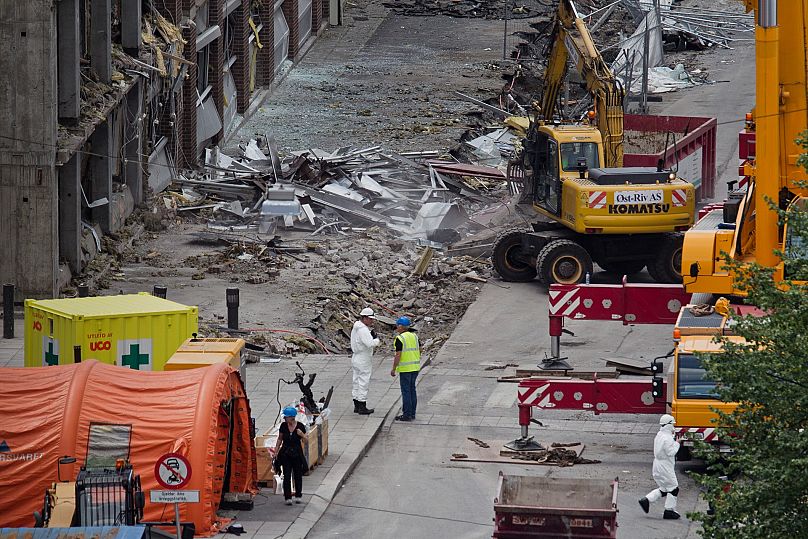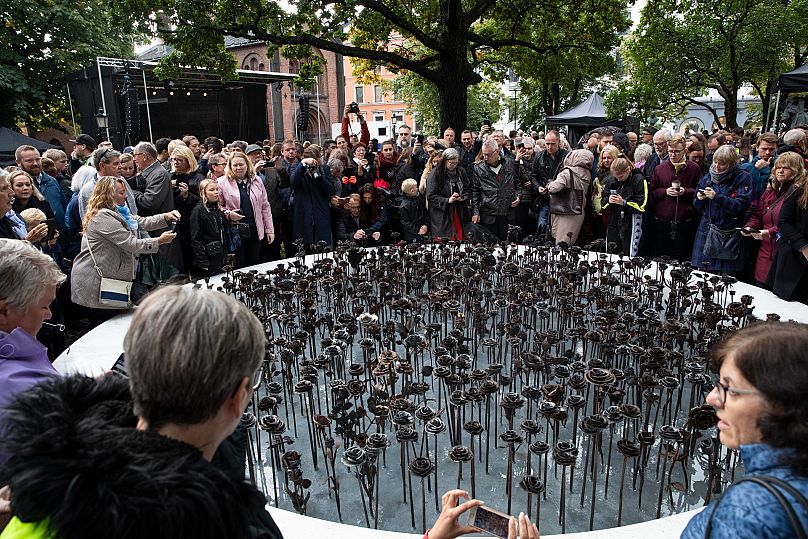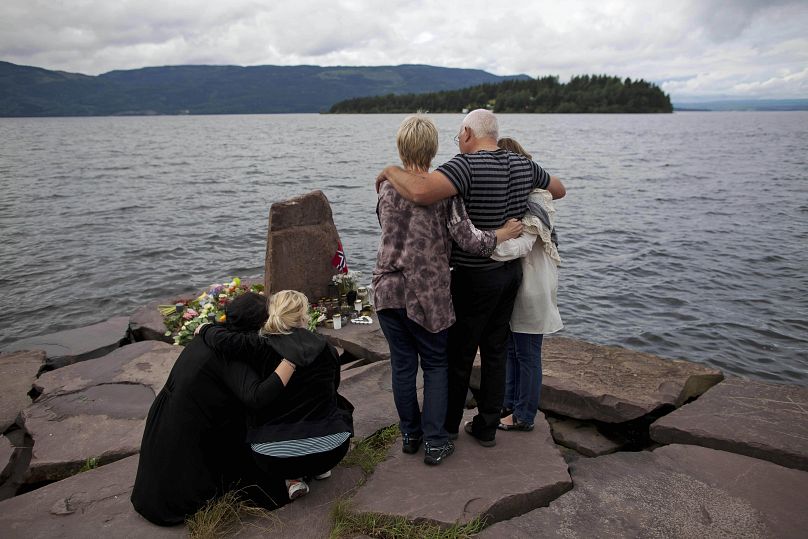Survivors and experts say that hate speech and the far-right ideology that inspired the massacre of 77 people still prosper.
Norway will on Thursday mark a decade since far-right terror attacks killed 77 people in the capital Oslo and the island of Utøya.
Anders Breivik's bomb and shooting spree on July 22, 2011, was the country's worst peacetime slaughter and the fifth deadliest terrestrial terrorist attack in Europe.
A decade on, survivors and experts say that little has been done to snuff out the far-right ideology behind the bloodshed.
Breivik, 42, said he had wanted to draw attention to his "manifesto", which expressed a far-right, anti-Muslim ideology. He was sentenced to a maximum of 21 years in prison a year after the attacks — his sentence can be extended indefinitely by Norway's judiciary as long as he is considered a threat to society.
But although he is now behind bars, Norway is still wrestling with the devastating impact of his acts and the far-right, anti-Islam ideology that inspired them.
Far-right 'as strong as it used to be'
"Strangely, this horrible event does not seem to have changed attitudes towards the far right. The massacres of 22 of July was a horrible shock, and a call of awakening for many, of course, and security agencies are monitoring the far-right scene more closely than they used to do," Kjetil Ansgar Jakobsen, professor at the faculty of social sciences at Nord University, told Euronews.
"However, the Islamophobic far right is as strong and articulated as it used to be, and the neo-Nazi scene, though small, has good public visibility," he said.
Survivors, too, see that determination is waning.
Miriam Einangshaug was 16 when the shooting started and she escaped physically unscathed by barricading herself inside one of the buildings on Utøya for more than an hour listening to the murder of her friends.
"We have political parties in Norway where it's common to spread 'Eurabia' theory (a far-right Islamaphobic conspiracy theory)," she said.
"I hope that the right side in Norwegian politics, especially this political party (the right-wing Progress Party), self-reflect and see what we can do to make sure that this doesn't happen again," Einangshaug added.
How did the attacks unfold?
Norway was plunged into a state of horror on a rainy Friday afternoon when a homemade bomb exploded outside a multistorey building housing the headquarters of then-Labour Prime Minister, Jens Stoltenberg.
The blast in Oslo's government quarter killed eight people and injured dozens.
As emergency services rushed to treat casualties at the scene, Breivik — dressed as an Oslo police officer — drove 40 kilometres northwest of the capital to the wooded island of Utøya.
Every year, hundreds of members of Norway's Young Labour Party (AUF) gathered on the island for a summer camp.
After claiming he had been sent to secure the island, Breivik disembarked on Utøya and armed with a rifle and semi-automatic pistol, began firing on the hundreds of young people at the camp.
The rampage lasted 72 minutes, claiming the lives of 69 people. A further 33 were injured by gunfire.
A number of people escaped the massacre by throwing themselves into the cold waters of the lake, where some were rescued by local residents and visitors.
After calling the police to surrender twice, Breivik continued to open fire, shouting "you're going to die, Marxists." A special police intervention team from Oslo finally arrived on the island and Breivik was arrested without offering resistance.
'Visibility of right-wing extremists has increased'
Stoltenberg — now NATO’s secretary-general — described the attacks as a "national tragedy" and vowed "more democracy, more humanity but never naivety" going forward.
But despite calls from the Labour Party, concerns remain that the beliefs and the motive behind the attacks have not been addressed.
"We failed to discuss this," Astrid Eide Hoem, who is now a leader of the AUF, said.
"We have discussed the unpreparedness of the rescue services, the number of police officers we should have on the street, the number of helicopters, the memorials, Breivik's mental health... But there was no discussion of the political ideology behind it," she stressed.
According to Jakobsen, several factors explain this failure.
The first one was a "strong need for national cohesion" which had the effect of "weakening and silencing the left".
Stoltenberg, he said, "chose not to say harsh political truths about the attacks as these would certainly have entailed counterarguments about the Labour government’s responsibility for the blatant security flaws that made a disaster on this scale possible".
Additionally, from 2013 to 2019, Fremskrittspartiet, a conservative right-wing party Breivik had been a member of, was part of the ruling coalition and "any attempt to say the simple truth about July 22 — which is that it was a murderous attack from the far right on the left — and to ask for vigilance in face of the dangers of right-wing populism, risked being clubbed down as 'playing the 22 of July card'," he explained.
The attacks also came as there was public debate over the publication in Scandinavian media outlets of caricatures of the Prophet Mohammed. The Norwegian left called for restraint.
"Thus, paradoxically, in the years following 2011, there was a strong and successful movement to protect and further the civil rights and freedom of speech of islamophobes and right-wing extremists. As a side effect, their visibility in public space has increased," Jakobsen said.
'His views are shared by more people today'
Breivik's actions have been cited as inspiration by other far-right extremists, including the perpetrator of the March 2019 shootings at two mosques in Christchurch, New Zealand, in which 51 people were killed.
Two years ago, Norway was also, once more hit by far-right extremism when an armed far-right activist, after shooting dead his adopted, half-Asian sister, attempted to break into a mosque in Bærum. Worshippers successfully subdued him.
Only then did Norway’s security police changed its assessments and say that right-wing extremists were more likely to carry out domestic terrorism than Islamists. Eight years after Breivik's attack.
"I thought that Norway would positively change forever after the attacks," said Aasmund Aukrust, then-deputy leader of the Labour Youth Wing who helped organise the 2011 camp on Utøya.
"Ten years later, that hasn’t happened. And in many ways, the hate we see online and the threats against people in the Labour movement have increased."
According to the party, one in three Utøya survivors say that they have experienced hate speech or direct threats since the 2011 attacks.
Aukrust, now a national lawmaker for the Labour Party, is one of many who has been campaigning for a nationwide inquiry into the right-wing ideology.
There is hope that a new book, featuring a newfound openness and anger among survivors, will "lift the debate" and shed light on the historical roots of the far-right in Norway.
"What was very positive after the terror attacks was that people saw this as an attack on the whole of Norway. It was a way of showing solidarity,” said Aukrust.
"But that has disappeared. It was an attack on a multicultural society. And though it was the act of one person, we know that his views are shared by more people today than they were 10 years ago."
Controversy over memorials
Memory politics — the organisation of collective memory by political agents — by the Norwegian government was also deemed to be a "string of failures" by Jakobsen.
The government decided to tear down a landmark building in the centre of Oslo damaged by the bombing. The building had been adorned with a giant mural of a Picasso painting engraved by Norwegian sculptor Carl Nesjar. Critics said the decision to tear it down and replace it with a sparkling new building would erase the atrocities of July 22, 2011.
And a memorial planned near Utøya remains unfinished. Swedish artist Jonas Dahlberg's 'Memory Wound' project had been the one selected for the memorial after an international competition.
The work planned for the tip of the peninsula facing Utøya to be cut to create a gap but the decision was later reversed following complaints by locals.
The project the government later settled on was of 77 bronze statues, designed by Norwegian architect Manthey Kula.
"I think it’s shameful that Norway, 10 years after the terrorist attack, doesn’t have an official memorial site near Utoya," Tonje Brenna, the former deputy leader of the Youth Wing, and today Labour leader of Viken, the county where Utoya and Oslo stand, said.
"It stands in grave contrast to the fact that the Norwegian Labour Youth have created their own beautiful, respectful and award-winning memorial site on the island,” Brenna said. “The youth have been able to do the task the Norwegian government has been unable to do."
Every weekday, Uncovering Europe brings you a European story that goes beyond the headlines. Download the Euronews app to get a daily alert for this and other breaking news notifications. It's available on Apple and Android devices.














